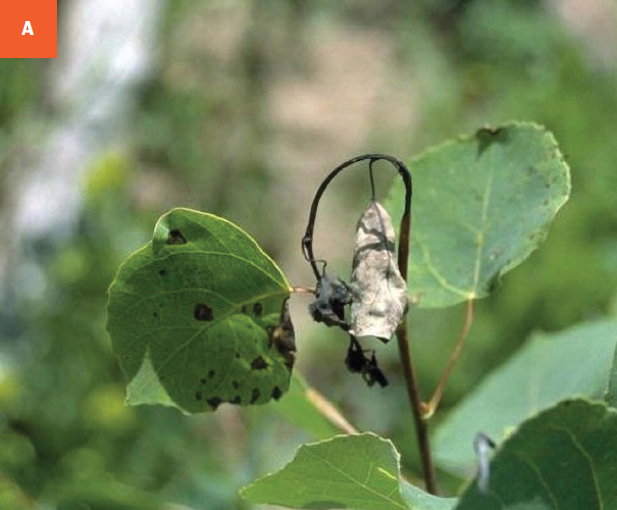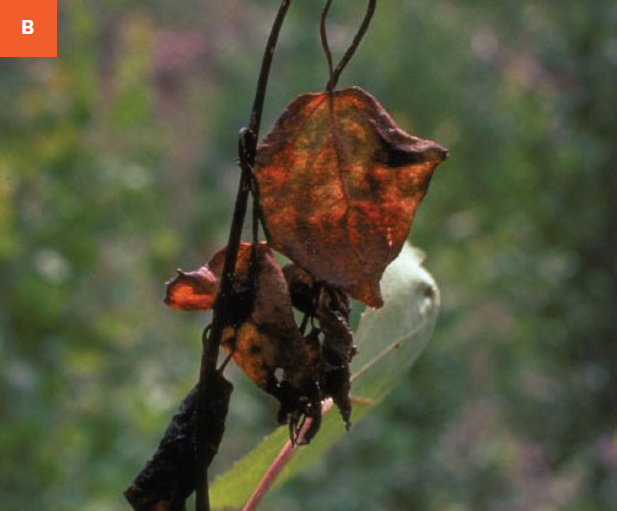Venturia Leaf and Shoot Blight
Venturia populina (fungus)
HOST Eastern cottonwood, Lombardy poplar, aspen
DAMAGE/SYMPTOMS In late spring, black, necrotic areas develop on leaves and shoots which may be mistaken as frost damage. The rapid dieback of shoots leads to drooping branch tips often referred to as a “shepherd’s crook.” Young and immature shoots are very susceptible. Necrotic leaf areas and affected shoots may be covered in olive-green spores. This disease is most severe on young trees. Recurring infection may lead to stunted and misshapen trees.
DISEASE CYCLE The fungus overwinters in infected shoots. During wet spring weather, spores are produced in infected plant tissues and dispersed by splashing rain and wind. New infections start as black leaf spots or necrotic tissue at leaf margins. Necrotic areas increase quickly and may kill leaves and/or shoots.
MANAGEMENT Prune out and dispose of infected shoots during dry weather. Make the pruning cut at least eight inches below the symptomatic area. Disinfect pruning tools with 70% ethyl alcohol or a standard household disinfectant spray before each cut to minimize spreading the disease. Avoid overhead irrigation to reduce leaf wetness. Focus on supporting plant vigor by providing adequate water and nutrients. Consider planting resistant varieties.
A Blackening and shepherd’s crook on aspen shoot. B Dieback of young shoot affected by Venturia sp.


